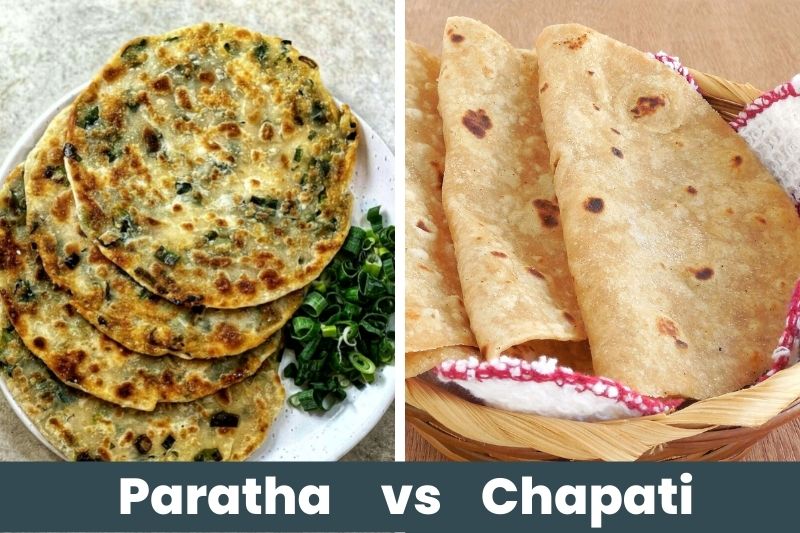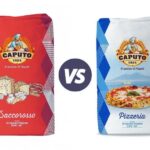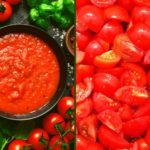Curry is one of the most popular dishes in the UK. From creamy kormas to hot and spicy vindaloos, there are plenty of flavours and spice levels to suit all pallets.
In the UK, we often serve curries with a side of rice or a soft and pillowy naan bread.
But two lesser-known Indian flatbreads also make a fantastic side dish to serve with curries: paratha and chapati.
Paratha and chapati both are cooked on a flat iron plate, unlike naan bread which is traditionally cooked inside a clay oven or a tandoor. They’re also both made from whole wheat flour.
Yet, aside from these similarities, the two Indian breads are distinct. So, what is the difference between paratha vs chapati? Let’s find out!
Differences Between Paratha vs Chapati
1. Cooking method
Both a paratha and chapati are cooked on a flat iron plate, also known as a griddle.
However, when a chapati is cooked, no oil is used whatsoever. Instead, the dough is dry-fried in the pan until warm.
Paratha, on the other hand, is always shallow fried. The dough is traditionally fried in ghee, an Indian butter that forms the basis of most Middle Eastern recipes.
In the UK, oil and butter are often used as a more readily-available alternative.
2. Stuffing & flavouring
Chapati is typically not stuffed—it is an extremely thin flatbread that looks similar to Latin American flour tortillas.
On the other hand, paratha is usually stuffed with cooked vegetables or paneer cheese.
Each bread is given its own name based on its filling. Aloo paratha is stuffed with potatoes, whereas pyaaz paratha is stuffed with onions and chilli powder.
You can also get plain paratha that is not stuffed with any additional ingredients. However, these are uncommon.
As the stuffing can be adjusted according to taste and preferences, stuffed is the most popular way to enjoy this authentic Indian bread.
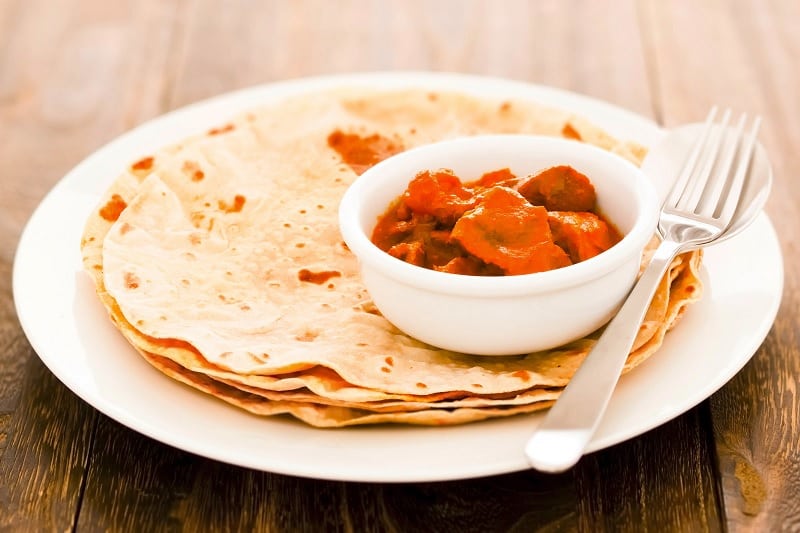
3. Texture
When chapati and paratha flatbread are first cooked, both have a wonderfully soft consistency.
However, chapati bread needs to be covered immediately or else they become hard quickly.
Comparatively, paratha stays soft for hours after cooking. This is thanks to the oils used during the cooking process which help moisten the dough.
4. Serving suggestions
Chapati is a popular side dish that can accompany almost any Indian meal. The bread’s plain flavouring makes it great for mopping up curry sauces and they’re enjoyed in India as a side dish for breakfast, lunch, and dinner.
On the other hand, paratha is more of a stand-alone meal in itself. Thanks to its stuffed filling and rich flavours, it’s usually served with traditional Indian dips such as pickles and plain yoghurt.
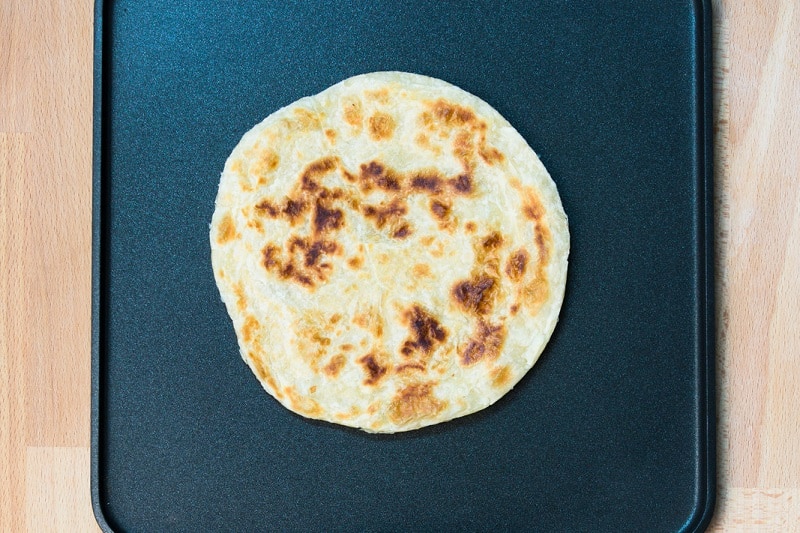
Other Indian Flatbread Comparisons
Paratha and chapati are just two of India’s most beloved flatbreads. Yet several different varieties of these breads exist within Indian cuisine. Here we look at each of them and how they compare:
Paratha vs parotta
A parotta is similar to a paratha in many ways. Both are flatbreads that have similar textures and are made by layering and folding the dough with ghee.
The bread is also traditionally stuffed, just like the paratha. However, there is one subtle difference: parotta is made with maida flour. This gives the bread a doughier texture.
Roti vs chapati
The words ‘roti’ and ‘chapati’ are often used interchangeably. But a chapati is technically a type of roti.
Both doughs are made from unleavened wheat flour and water, then are cooked on a flat griddle.
However, whereas chapati is always made with wholewheat flour, roti can be made with any flour.
There are several other types of roti, including makki roti (made with corn flour) and akki roti (made with rice flour).
Lachha paratha vs chapati
A lachha paratha is a specific type of paratha that has many layers. This means that once cooked, it has a distinct spiralled appearance.
It’s this unique floral shape that gives the Indian flatbread its name – ‘lachha’ means ‘spiral’ in Hindi.
On the other hand, a chapati does not typically have layers. It is traditionally made by rolling the dough flat.

Hannah is a freelance content writer and self-proclaimed foodie. When Hannah isn’t sitting tapping at her laptop, you’ll probably find her in the kitchen. As an ex-chalet host, she’s used to cooking four-course meals for 10+ people and loves feeding friends and family whenever possible.

